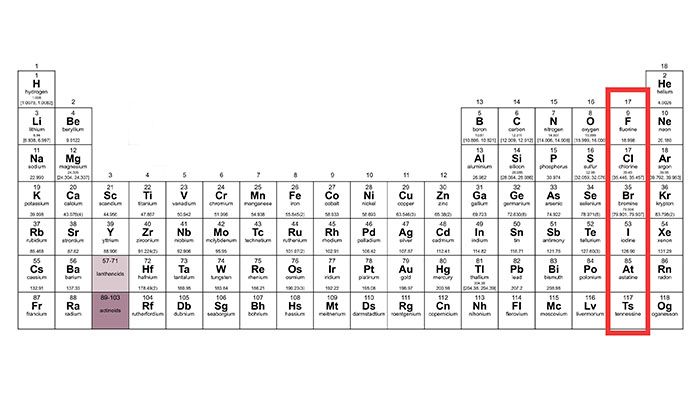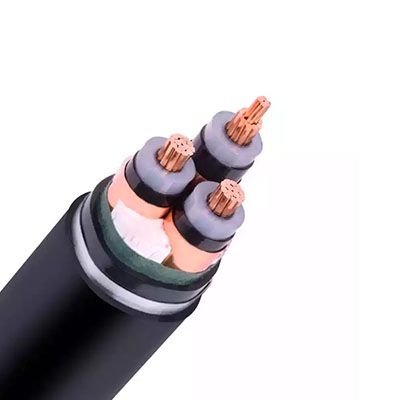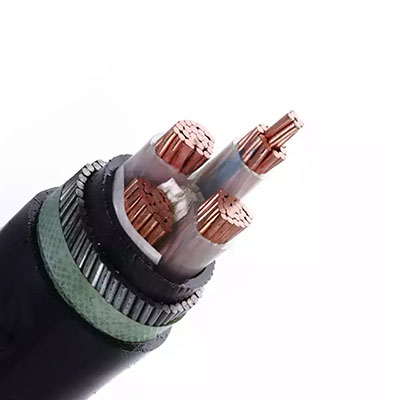- Offices Time:24 Hours Online
- Email:[email protected]
- WhatsApp:+8618339938759

Posted on April 21, 2023
Why Halogen-Free Flame Retardant Cables are a Must-Have in Buildings?
Halogen-free flame retardant cables offer several advantages over traditional cables that contain halogenated materials. Firstly, they produce less smoke and toxic gases, reducing the risk of inhalation injury during a fire. Secondly, they do not emit corrosive gases, which can damage electrical equipment and cause further hazards. Lastly, they are environmentally friendly as they do not contain halogens, which are known to be harmful to the environment.
Halogen-free flame retardant cables are becoming increasingly popular in the construction industry due to the growing awareness of fire safety and environmental concerns. Many countries have introduced regulations and standards to promote the use of these cables in construction, and they are often specified in building codes and guidelines.
What is Halogen-free flame retardant cables?
Halogen-free flame retardant cables are a type of electrical cable that has been designed to minimize the spread of fire and reduce smoke emissions in case of fire. These cables do not contain any halogenated materials, such as chlorine, bromine, or fluorine, which are commonly used as flame retardants in traditional cables. Instead, they use alternative flame retardants such as phosphorus, nitrogen, and magnesium hydroxide to achieve the required level of fire resistance.
What are halogens?
Halogens are a group of elements in the periodic table that includes fluorine (F), chlorine (Cl), bromine (Br), iodine (I), and astatine (At). They are characterized by their tendency to form salts with metals, and they are highly reactive non-metals.
Halogens have many industrial applications, including as disinfectants, solvents, and flame retardants. However, they are also known to have negative impacts on the environment and human health. For example, when halogenated compounds are burned, they can release toxic gases such as hydrogen chloride and hydrogen fluoride, which can cause respiratory problems and acid rain.

What are flame retardants?
Flame retardants are chemicals that are added to materials such as plastics, textiles, and coatings to reduce their flammability and ability to catch fire. They work by either suppressing the combustion reaction or by forming a protective layer on the surface of the material that prevents the spread of fire.
There are several types of flame retardants, including halogenated compounds, phosphorus compounds, nitrogen compounds, and inorganic compounds. Some common examples of flame retardants include polybrominated diphenyl ethers (PBDEs), tetrabromobisphenol A (TBBPA), and tris(1,3-dichloro-2-propyl) phosphate (TDCPP).
Characteristics of Halogen-free flame retardant cables:
Halogen-free flame retardant (HFFR) cables are designed to provide fire safety without using halogens, which are known to emit toxic and corrosive gases when exposed to fire. Here are some of the key characteristics of HFFR cables:
1.Non-toxic: This cables are non-toxic and do not emit harmful gases or fumes when exposed to fire. This makes them safer for use in enclosed spaces such as buildings and other structures.
2.Low-smoke: HFFR cables produce minimal smoke when exposed to fire, which helps to improve visibility in emergency situations and reduces the risk of smoke inhalation.
3.Low-flame spread: They are designed to resist the spread of flames, which can help to contain fires and prevent them from spreading.
4.High-temperature resistance: They are able to withstand high temperatures without losing their structural integrity or compromising their fire resistance.
5.Durability: This cables are durable and resistant to environmental factors such as moisture, sunlight, and chemicals, which makes them suitable for use in a variety of applications.
6.Compliance: HFFR cables meet international safety standards, such as IEC, UL, and CE, ensuring that they are suitable for use in a wide range of applications and countries.
7.Environmentally friendly:They are free from halogens and other harmful substances, which makes them more environmentally friendly than traditional flame retardant cables.
8.Easy to install: Easy to install and can be used in a variety of applications, including power distribution, communication networks, and transportation.
9.Cost-effective: While HFFR cables may be slightly more expensive than traditional cables, they are often more cost-effective in the long run due to their increased durability and improved safety.
10.Reduced maintenance: Require less maintenance than traditional cables, as they are more resistant to environmental factors such as moisture and chemicals, reducing the need for frequent repairs and replacements.

Application of Halogen-free flame retardant cables in construction industry
They are becoming increasingly popular in the construction industry due to their many advantages over traditional PVC cables, which contain halogens such as chlorine and bromine.
1.Public buildings:
Halogen-free flame retardant cables are commonly used in public buildings such as hospitals, schools, and government buildings, where fire safety is of utmost importance. They are preferred over traditional PVC cables as they emit less smoke and toxic gases in the event of a fire, reducing the risk of injury to people.
2.Residential buildings:
Halogen-free flame retardant cables are also being increasingly used in residential buildings due to their fire safety properties. They are particularly useful in multi-story apartment buildings where the spread of fire can be rapid and deadly.

Development prospects of halogen-free flame retardant cables
There is a growing concern about the negative impact of halogenated flame retardants on the environment and human health. As a result, many countries have implemented regulations to limit the use of these compounds in various products, including cables.
The demand for this cables is expected to grow due to the increasing awareness of fire safety in various industries. This cables have excellent fire retardant properties, which make them an ideal choice for applications where fire safety is a primary concern.
Advancements in halogen-free flame retardant cables technology have led to the development of new materials and manufacturing processes that improve their performance and reduce their cost. For example, new insulation materials such as thermoplastic elastomers (TPEs) and polyethylene (PE) have been developed to replace traditional PVC insulation. These new materials offer better fire retardancy, mechanical properties, and resistance to chemicals and weathering.
So, the prospects for the development of HFFR cables are very promising, and the demand for these products is expected to increase in the coming years due to their environmental friendliness, fire safety properties, and technological advancements.
If you’re looking for a safe and reliable option for your electrical wiring needs, it’s time to make the switch to halogen-free flame retardant cables. These cables are designed to provide maximum protection in the event of a fire, while also being environmentally friendly.In addition to their safety benefits, halogen-free flame retardant cables are also highly durable and long-lasting. They are designed to withstand extreme temperatures and harsh conditions, making them ideal for use in a variety of applications, including industrial and commercial settings.
So why wait? Protect yourself, your property, and the environment by making the switch to halogen-free flame retardant cables today. With their unbeatable combination of safety, durability, and performance, these cables are the smart choice for any electrical wiring project.
Post categories
Most Popular Posts
-
The 136th Canton Fair welcomes you to participate!
October 12, 2024 -
High temperature cable introduction
July 26, 2024 -
Kenya Power and Energy Exhibition 2024
June 11, 2024 -
Introduction of rubber sheathed cable
June 5, 2024





